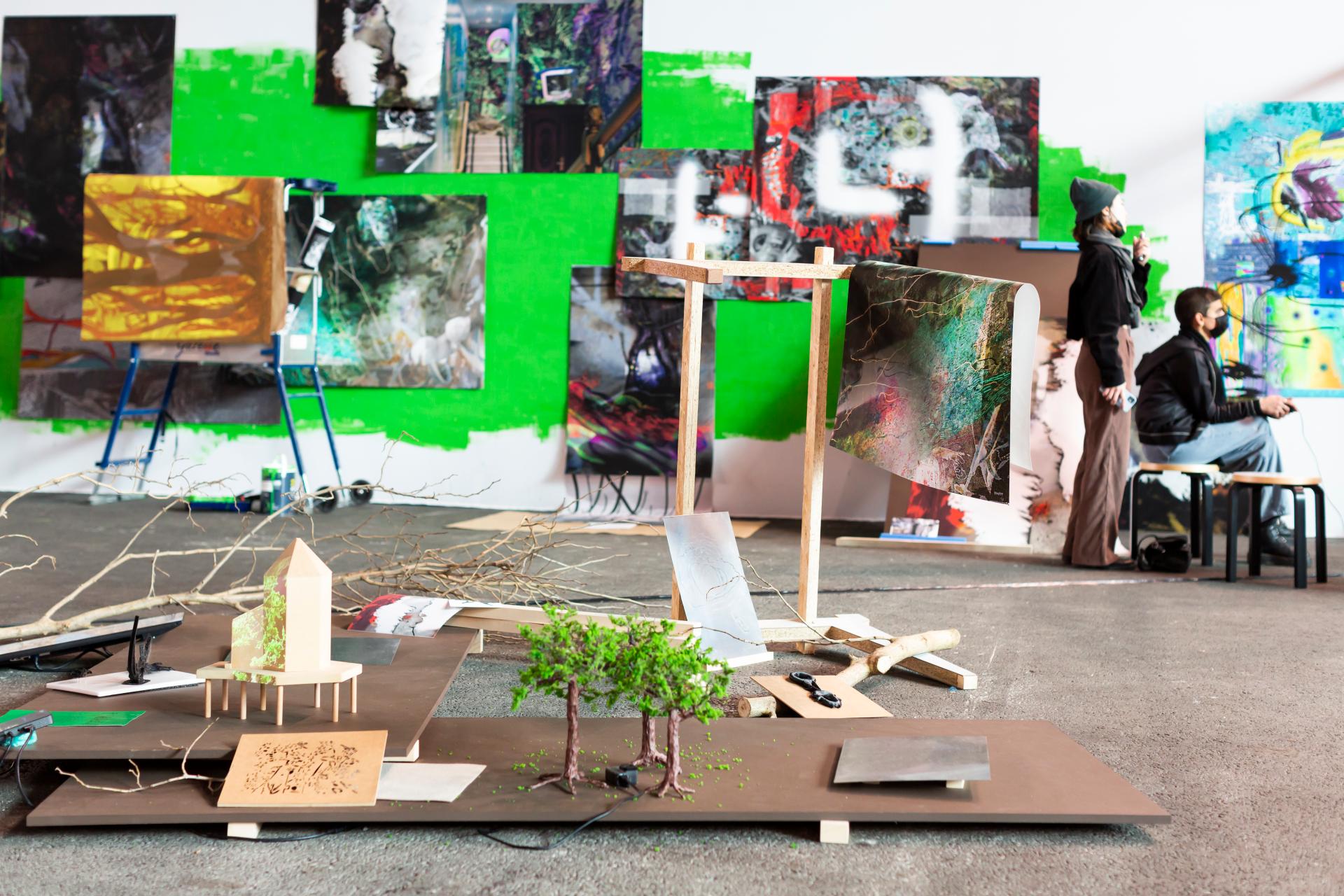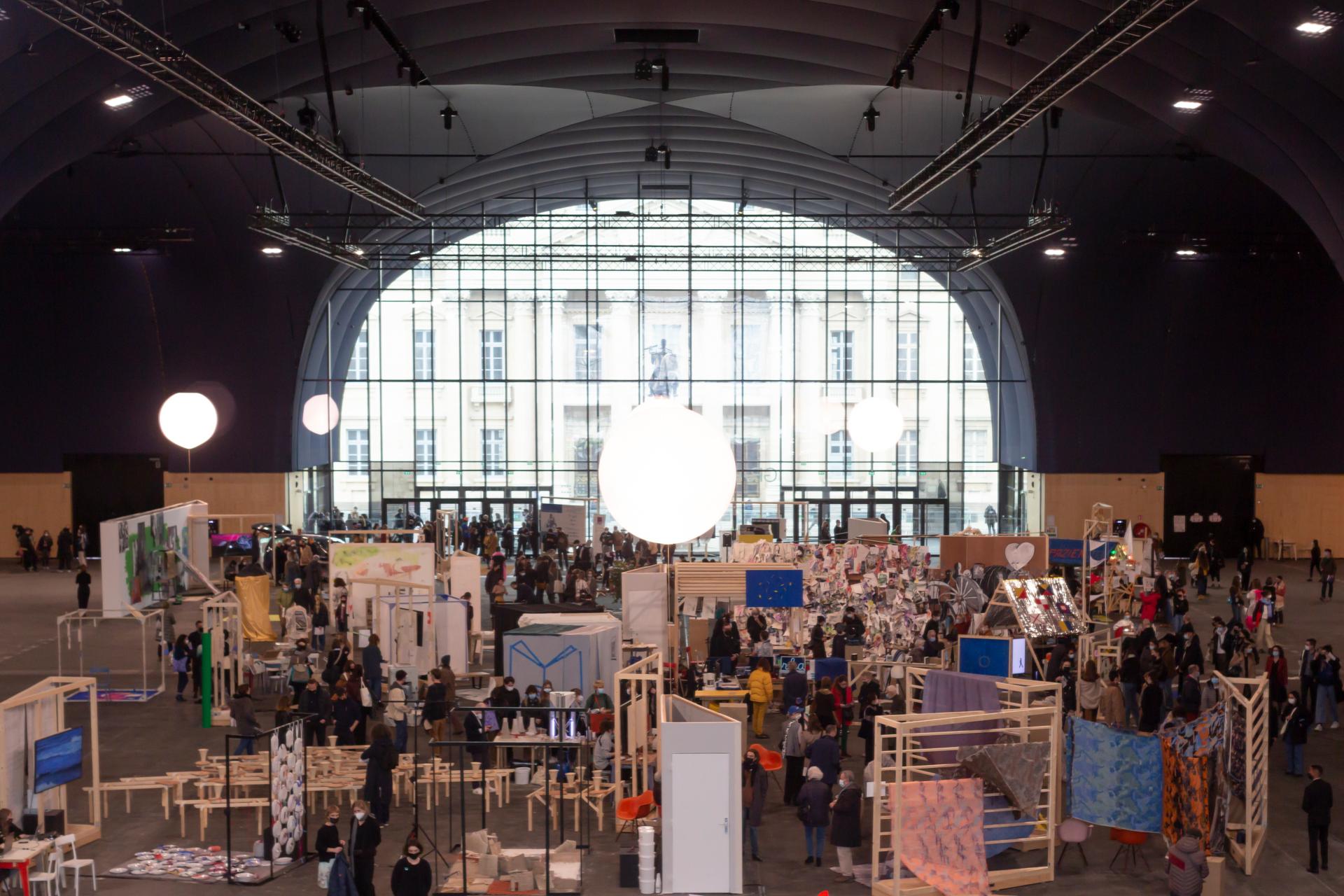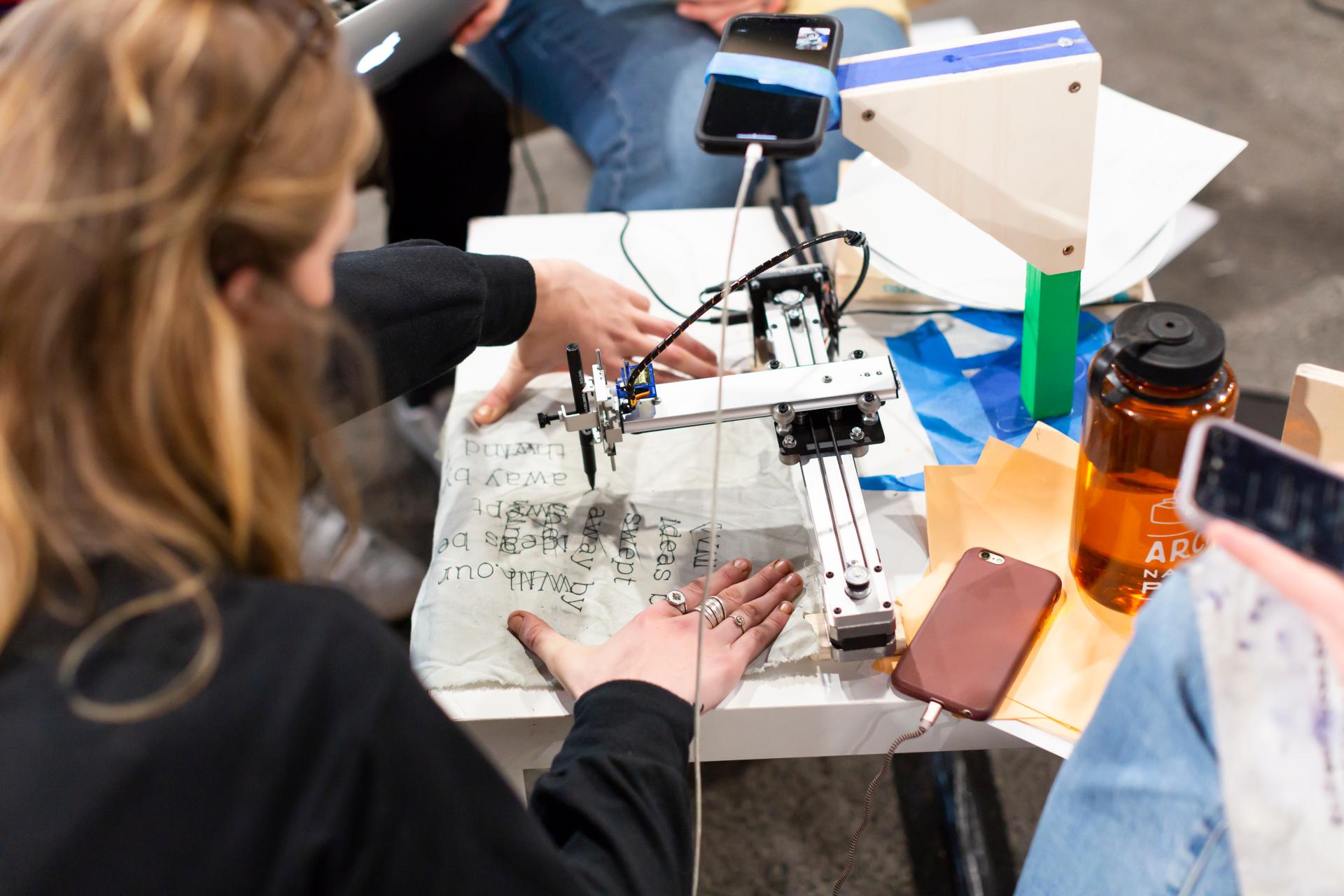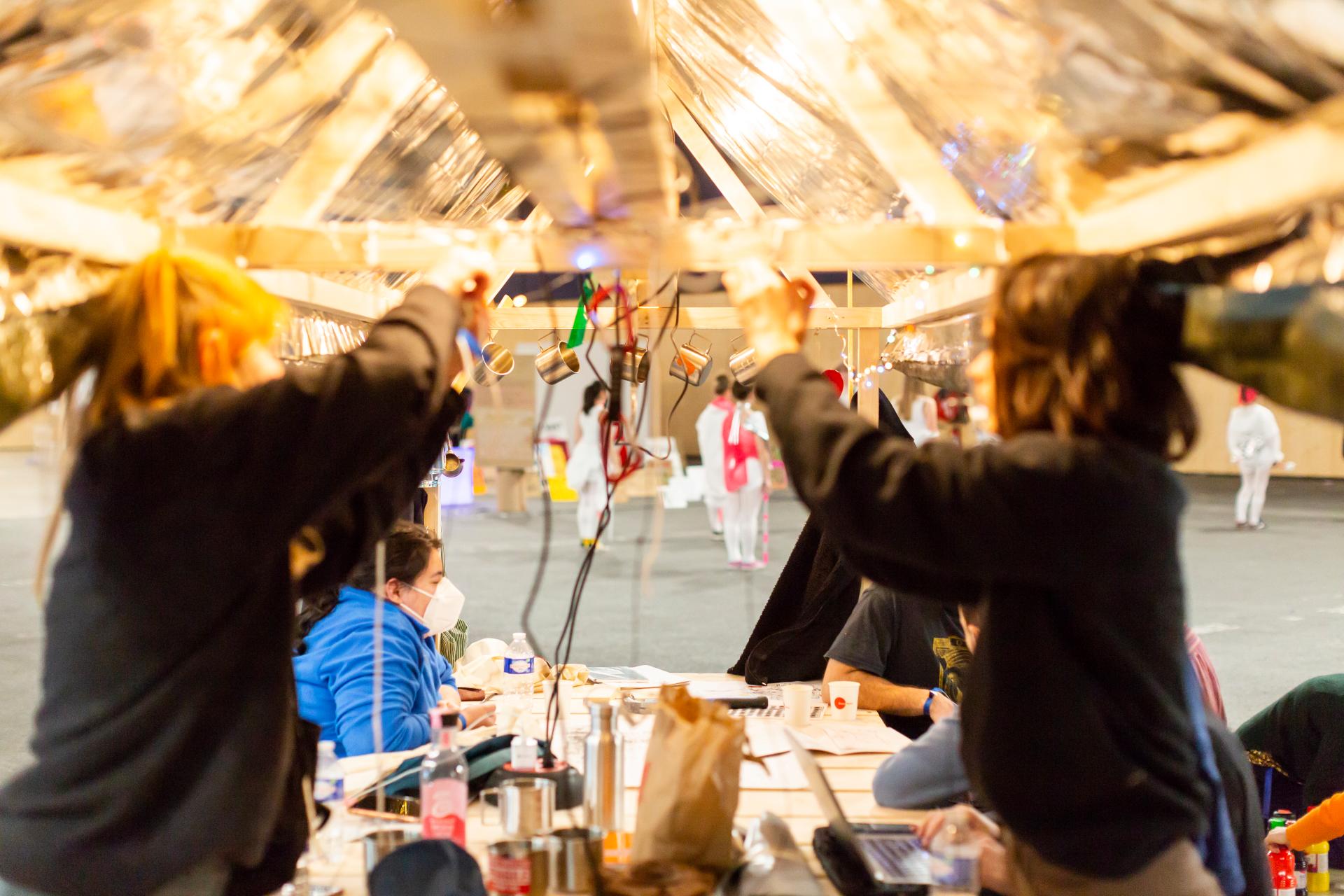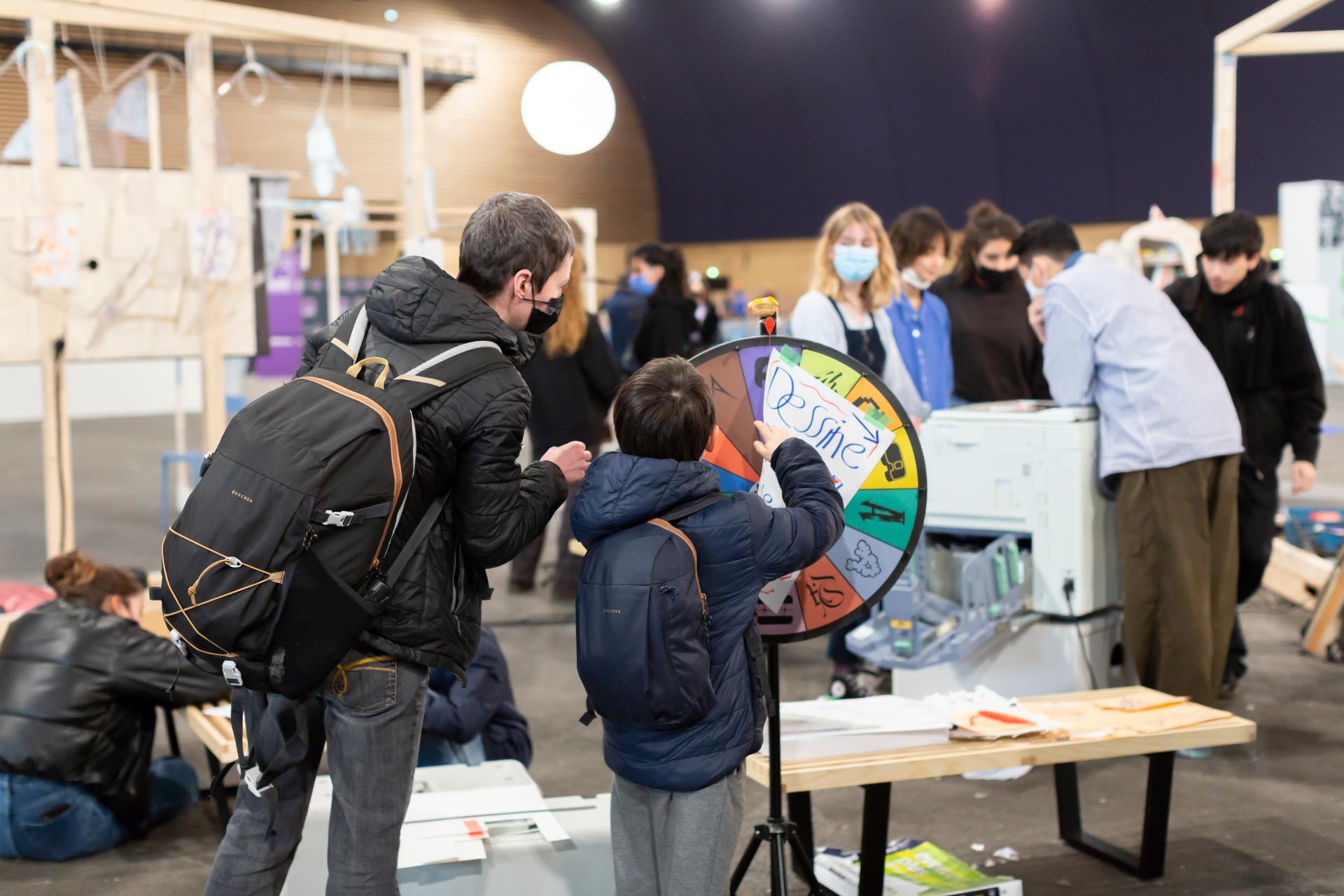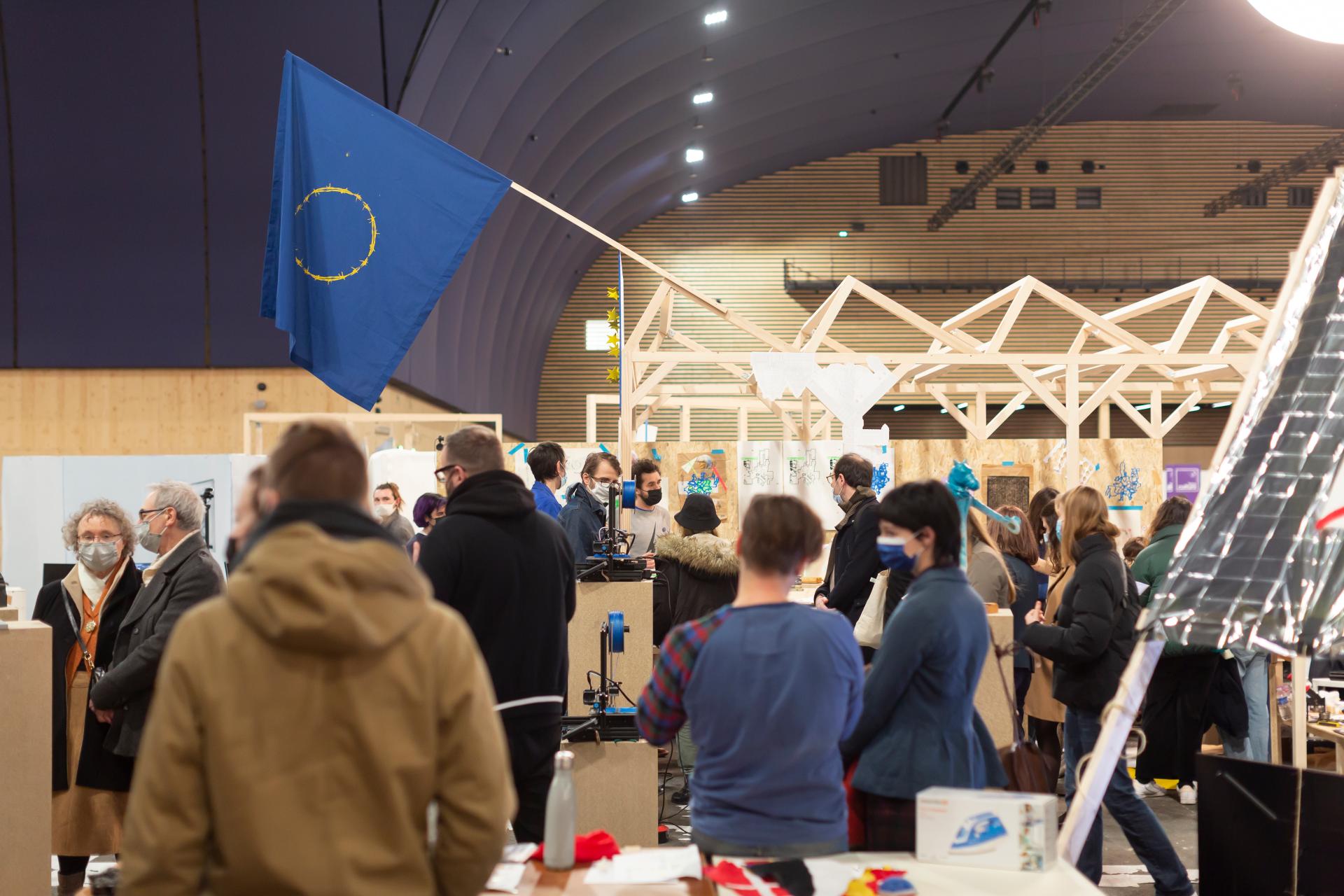EuroFabrique
Basic information
Project Title
Full project title
Category
Project Description
EuroFabrique gives a voice to European youth, artists and thinkers to question the idea of Europe and its future. For four days, the Grand Palais Éphémère in Paris has become a collaborative and transdisciplinar workshop, somewhere between a hackathon and a giant studio, bringing together 400 students from European top art and design schools. Together, they materialized the forms, imaginations and desires capable of re enchanting the idea of Europe in a sustainable, inclusive and beautiful way.
Geographical Scope
Project Region
Urban or rural issues
Physical or other transformations
EU Programme or fund
Which funds
Description of the project
Summary
EuroFabrique gives a voice to European youth, artists and thinkers to question the idea of Europe and its future and contribute to bringing them back the spirit of Europe in its whole diversity. It is a participatory, inclusive, innovative and replicable format where knowledge and creativity, utopias and achievements are combined. For four days in february 2022, the Grand Palais Éphémère has become a collaborative and transdisciplinar 10,000 sq workshop, somewhere between a hackathon and a giant studio, bringing together 400 students from 35 European art and design schools (including art, design, cinema, theatre and music schools) to reflect on the continent they live on. A 36th ephemeral school which brought together artists at risk is also imagined for the occasion. Together, they materialized the forms, imaginations and desires capable of re-enchanting the idea of Europe in a sustainable, inclusive and beautiful way.
What does being European mean today? How do we make Europe a desirable environment with a positive outlook? How can we connect it to the rest of the world, through which principles, links and attachments? And if Europe is a project, how do we bring it back to life? To explore these questions, the students worked in binational partnership to design 19 joint projects that questioned the values, problems and debates of Europe today. The responses are taken on multiple forms, from performance to sculpture, textile creation, drawings or sound. The subjects broached have all clear connections to certain aspects of European identity such as language, the environment, the question of borders, folklore and cultural narratives. 2 600 visitors came on the last day to discover the works in progress and interact with the contributions from the top art and design schools to the public debate on the present and future of Europe: a journey through forms, images, stories and myths that shape a shared world.
Key objectives for sustainability
Sustainability is at the heart of EuroFabrique. It is first and foremost about echoing the way in which art and design schools students are seizing the Green Deal and proposing creative solutions. Environmental issues are the major concern of young people.
This was strongly evidenced in the content of the works produced by the students teams. Several projects directly questioned our relationship with life and nature. Young people are also taking up the issue of sustainability beyond the strict environmental question.
Sustainability was also reflected in the whole organisation of EuroFabrique, with clear sustainability objectives. One creative team worked on an algorithm and a representation of the carbon footprint of the days. All meetings were conducted online, with travel restricted to the necessity of the Paris meeting. Meals were provided by the Parisian university restaurant, which works with a short circuit objective. The scenography was constructed primarily through the creative use of re-cycled materials. The furniture, in particular the tables provided by the partner Forum Bois with tables designed by Atelier d'Architecture Vincent Parreira (AAVP) were created from 1,200 doors of the former Saint-Vincent-de-Paul hospital in Paris, and produced by Mobius' workshops. Those tables are part of a virtuous process through reuse of materials and job creation for people undergoing rehabilitation. Finally, EuroFabrique scenography will itself be reused and partly donated to the French artists at risk agency for reuse. We thought that we had to be exemplary in this respect.
Eurofabrique has been the perfect place to co-create, adopt and disseminate more environment-friendly practices, as well as to raise awareness on sustainable development through creative activities.
Key objectives for aesthetics and quality
Who better than art and design schools to give an aesthetic dimension and quality of experience? Questions of aesthetics, of the formalization of ideas, remain the major preoccupation of art and design students, as well as the main focus of their training.
The responses of the students were taken in multiple forms and artistic practices, from dance, performance to sculpture, installation, textile creation, video games, ceramics, drawings or sound. The diversity of Europe could also be seen through all these media. All the projects claim a strong relationship to beauty, to the quality of materials and to experience. With EuroFabrique, we witnessed the involvement of several subjectivities within a field, a practice, which is as much that of art as that of the field, with issues not only of form but also of use and concern for social life and the collective interest.
The whole project is by itself an aesthetic experience conceived by a group of students of l’école supérieure des arts décoratifs, building a strong collective imaginary. With its dark blue, sky-high ceiling and its 10 000 sq. meters of floor space, the Grand Palais Ephémere enables one to take the measure of the European continental scale. While walking from one end to the other, crossing the asphalt space as ones would move through a city, a sensation appears that has to do with a geography: the body hikes, circulates, wanders, but it does not "visit" as one would do in a museum, while you pass without thinking about it from one work to another. It is from this experience and this potential, that a “territory”, rather than a scenography, has unfolded. This geographical metaphor has been used this way to organize the co-presence of the dozens of projects that have taken over this vast space and to create a unique, innovative experience for the participants and the visitors.
Key objectives for inclusion
EuroFabrique is a project made for the youth, by youth. In this sense, EuroFabrique is a participatory, inclusive, accessible and innovative initiative where citizen engagement is clearly at the heart of the project. It had formed a contribution from the art and design schools to the public debate on the present and the future of Europe: a journey through forms, images, stories and myths that shape a shared world.
Students were involved from the very beginning of the design of the initiative. Project teams were formed in schools and between schools and projects were proposed in a clear bottom-up approach. The programming of the day open to the public (DJ set, performance, concert...) was entirely co-constructed with all the participants. EuroFabrique also became a platform that has broken down barriers in all directions: politicians, major personalities from the arts and culture and students met without intermediaries and filters.
The greatest possible diversity was respected, with an important representation of nationalities, genres, cultures, languages and profiles as 35 French and European art schools took part in EuroFabrique. A 36th school imagined for the occasion had brought together artists and students at risk, in collaboration with already existing long term programs. The schools were selected through a call for projects to ensure fair participation. The funding raised allowed even the ones with limited resources to participate.
The interactions with the public on the last day enabled the projects to be shared in a participatory approach. The 2600 visitors, whose diversity was tangible (in terms of generation, gender and background) were encouraged to interact, question, contribute and participate in the life of the projects, in the reflections in progress and even in the production. Admission was free of charge and the public was widely invited with communication in the 14 languages of the participating schools and
Results in relation to category
EuroFabrique creates a large space for experimenting around the idea of Europe, bringing together the energy and creativity of upcoming artists and designers from all over Europe. It became an echo chamber of what young people in Europe, and in particular creative young people, want for the future of the European Union. The aim is to collectively initiate a debate on the future of Europe and to draw the contours of a new common imaginary.
As such, it makes a perfect contribution to reviving the spirit of Europe in all its diversity and to strengthening a sense of European belonging.
It is also worth noting that a large part of specific projects developed clearly explore issues of living together to provide aesthetic and political solutions.
The impact of Eurofabrique and the students' proposals is wide as they have been seen and discussed by:
- political level = ministers, European commissioners, ambassadors, French elected officials
- institutional sphere = the management of media such as Arte or France culture, representatives of the Erasmus + France agency, the French Institute, the Goethe Institute, the European Cultural Foundation (Amsterdam), European art and design schools, etc.
- the cultural and intellectual field = artists and other creators came and participated in the exchanges (Rem Koolhaas, Benedicte Savoy, etc.), observed the proposals, will be inspired by them (in biennials, artistic events)
It should be noted that the press coverage was important in many European countries, the elements of communication having been diffused in 14 languages and with an important relay of the social networks.
How Citizens benefit
The interactions with the public on the last day enabled the projects to be shared in a participatory approach. The 2600 visitors, whose diversity was tangible (in terms of generation, gender and background) were encouraged to interact, question, contribute and participate in the life of the projects, in the reflections in progress and even in the production.
Citizens were mostly involved in the process upstream. To develop the projects implemented during EuroFabrique, the groups of students worked for 6 months in very strong connection with their respective territories in the 14 participating countries. Most of the starting points for the students' research were surveys or fieldwork sessions, involving the schools' home communities. Some groups worked, for example, on the issue of borders and movement with the people concerned (including migrants); others on the issue of language, with recordings made with locals; yet another decided to tackle the issue of nature, more specifically through the prism of the forest, after a survey of forest environments (in France and Greece, where the issue was intensified by the destruction of the island of Evia this summer by fire...).
The students have been ambassadors for their territories and communities, carrying the words and forms that have been entrusted to them. This is why Eurofabrique is not only an artistic but also a political project for a more sustainable, inclusive and beautiful world.
Physical or other transformations
Innovative character
EuroFabrique is a highly innovative format.
Innovative because it is an event first of its kind. Usually, art and design schools, like other cultural events of the same type, address the public with exhibitions showing finished objects. EuroFabrique, on the other hand, "exhibits" a process. The approach is participatory and processual and as such also shows innovation. It ensures that it is fruitful at all its stages: upstream, in the schools where the idea of Europe is at work in a local area, then in Paris in the encounter between the projects and with the public, and then once the projects "come back" to the schools and their local communities.
Innovation is also in a form of transgression, or how one of the most important and prestigious cultural establishments in France was made available to young people, which is never the case. The students camped for four days in a place as symbolic as the Champ de Mars, in front of the Eiffel Tower. It was a question of giving a voice to the youth, this generation of marches for the Climat, who lived through the covid during their studies and who, a few days after Eurofabrique sees that war is returning to the European continent… EuroFabrique was a peace camp, made for and by the youth of Europe on this Champ de Mars which was a place invented to celebrate military victories. It expresses the will to maintain the achievable utopia of Europe to produce harmony and peace between peoples.
Learning transferred to other parties
Eurofabrique has been a kind of “big bang”, a concentration of energy and propositions that after the M moment, releasing energy and matter, are now expanding, creating multiple universes, all connected, making diverse but correlated worlds on the European continent...
Beyond the event itself, EuroFabrique will be maintained over time through the creation of a network of schools that will work as a collaborative project accelerator. The Eurofabrique network will be activated to support the hosting of artists and students taking refuge in Europe following the Russian invasion.
Eurofabrique has generated collaborations that will continue and pollinate artistic worlds. The projects will be developed and shown again in other contexts, in conjunction with numerous cultural operators (ARte, Biennales d'art contemporain, etc.).
Perfectly replicable, EuroFabrique is now in motion, expanding into other European territories – unfurling, propagating new branches and side shoots, ready to re-emerge in Athens, Cluj, L’Aquila, Karlsruhe, Riga, Lisbon... The idea of an AsiaFabrique also emerged in connection with one of the most important Biennials of Contemporary Asian Art. EuroFabrique has just ended, but everything that has been forged in Paris, the converging powers of European youth and creation, is only just beginning.

